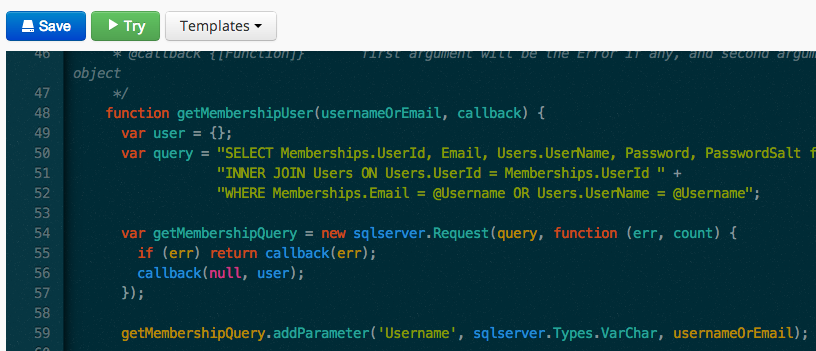Since we released the beta, one of the things our customers have been telling us, is they want us to support a "username/password" authentication. Auth0 is being used today by two different audiences:
Cloud apps: they want to have a single uniform authentication and login analytics, across all the options: social providers, enterprise providers (like Google Apps or Active Directory, SAML Providers) and now, username and password.
Organizations: our enterprise customers, typically have already a dozen (sometimes more) of "identity silos" created for different apps, at different times and they want to consolidate those databases.
Enter Database Connections
Database Connections works exactly like "Custom Connections" but with some advantages:
- you don't have to deploy another application
- seamless widget integration
- a whole set of templates for your needs
- develop, try and debug in the cloud without needing to install any tool
Example: ASP.NET Membership Provider
Suppose we have already started to build a product using the standard ASP.NET Membership Provider. ASP.NET Membership autogenerates a set of tables and relationships in Sql Server as shown here:
We would start by creating a new Database Connection in Auth0. Then we can pick the ASP.NET Membership Provider from the list:
We can tweak the script to fit our needs:
Connection strings and passwords should be stored as configuration settings in the bottom pane:
We can open at anytime the Try window to run our script:
In order to debug the script you can take advantage of console.log:
When the login is succesful you will see a green border and the result profile:
After we have finished the script, the login widget in our site will look like this:
Get started today
Read the tutorial in our documentation page to get started.
This feature is available in both the enterprise appliance and cloud version. Try Auth0 yourself!About the author

Jose Romaniello
Head of Engineering








